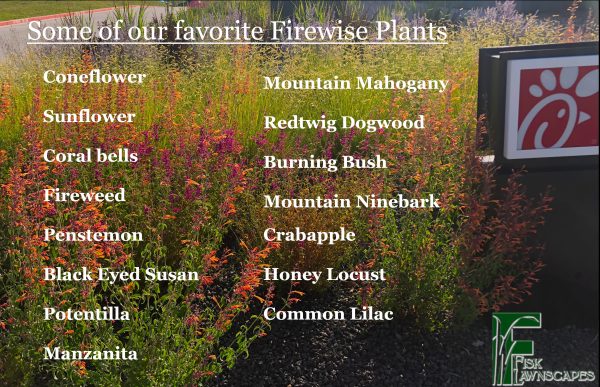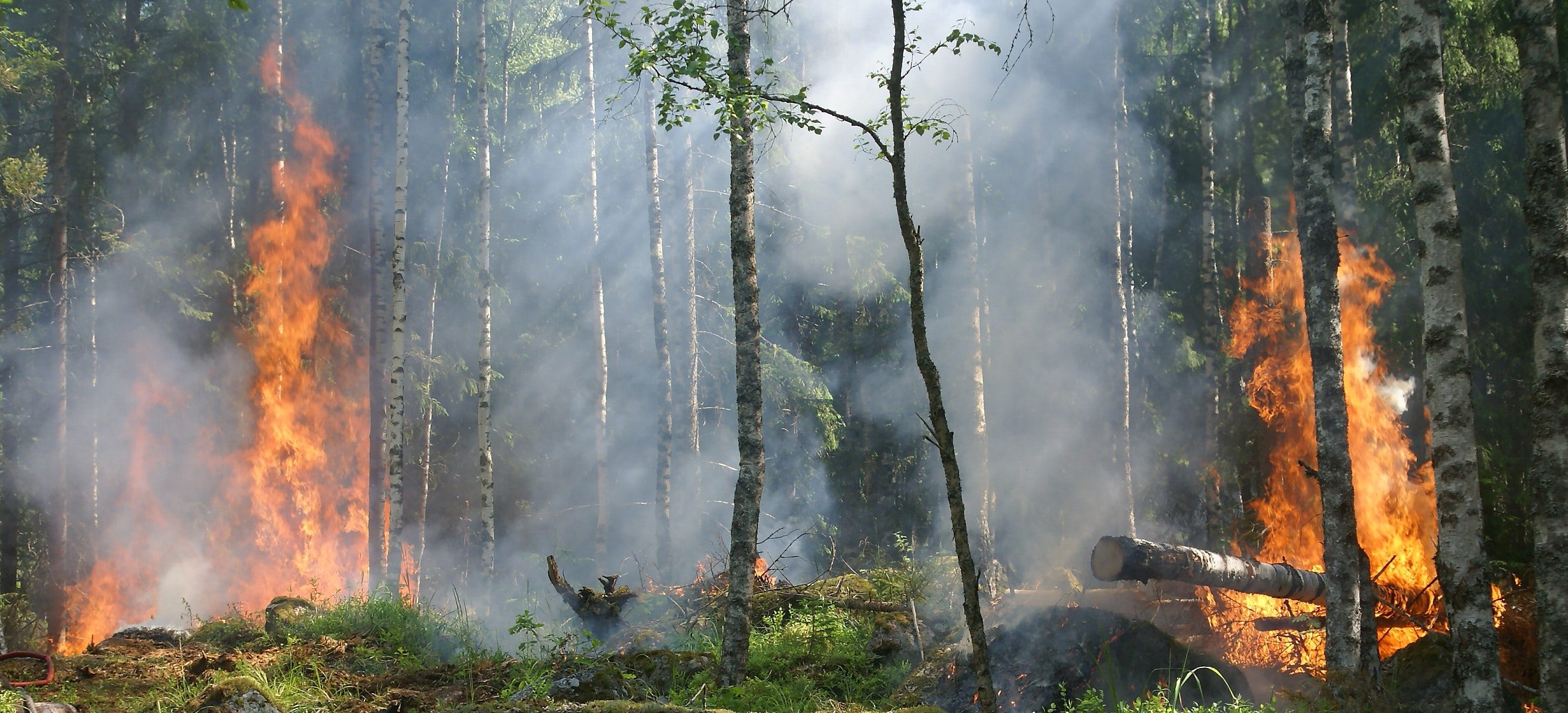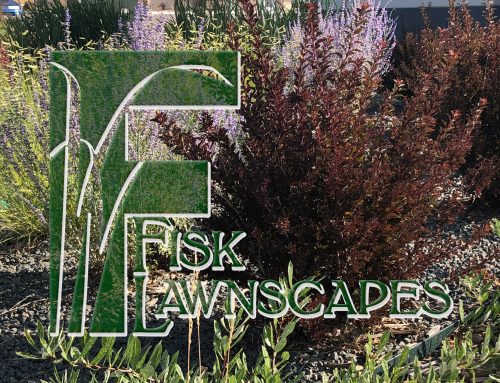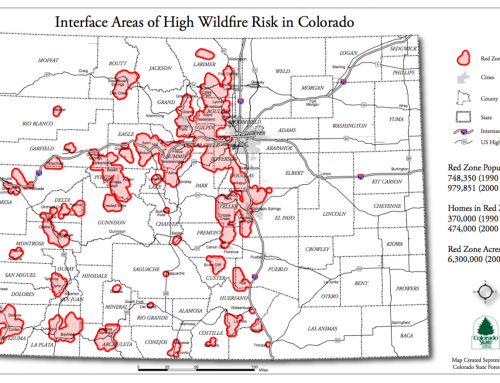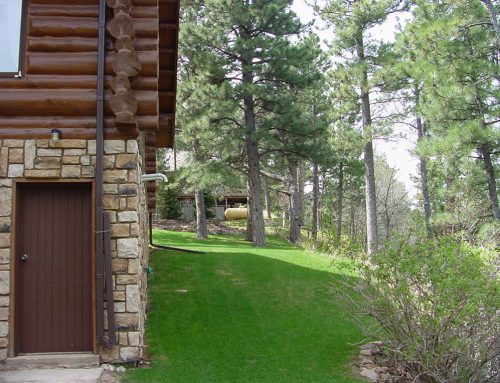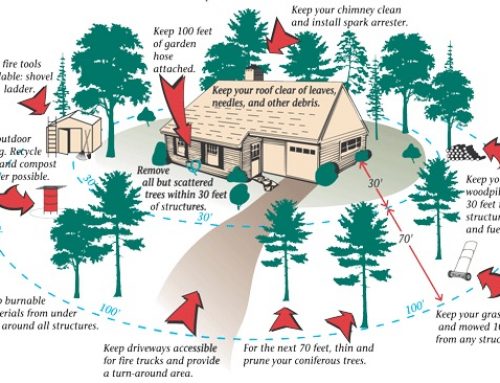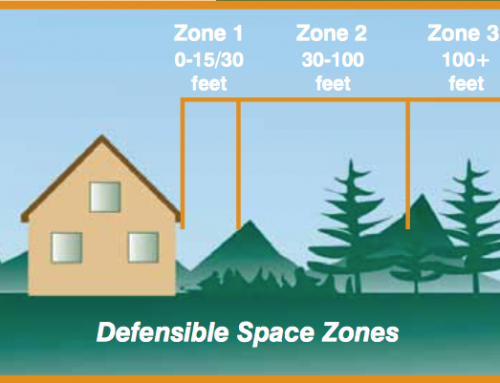Wildfire Mitigation is truly a year-round activity that requires consistent maintenance. If only it were so easy as to cut down brush once and not have it grow back! But landscapes are living organisms, and continue to grow, spread, and change over time. It’s also easy to think that if you don’t live directly within the Wildlife Urban Interface (WUI), that mitigation isn’t important. However, the fire at the apartment complex in southern Colorado Springs earlier this year is a reminder that fires can take place throughout the city, not just within the WUI. The first 30 feet around your property are the most important in creating a defensible space . Here are five things you can do right now to reduce your wildfire risk:
Trim up Your Grass
Long grass, especially native grass, spreads wildfire more easily than neatly trimmed grass. This is especially true of non-irrigated grass as it tends to be drier throughout the year. Making sure that this grass gets trimmed a couple times a year when it starts getting long will help create a fire barrier around your property. Keep grass around any structure to a maximum height of 8 inches.
Plant Firewise
Many people don’t know that that some plants are more firewise than other plants! One of the biggest hazards for Colorado Springs are junipers next to buildings, which are especially common in communities built in the 70’s and 80’s.
Junipers are notoriously a fire hazard, as they have a high resin content, die from the inside out, don’t require as much water as other plants, and with their age, collect lots of blown in trash.
Instead, remove those old junipers from right next to your building, and look to plant something from Colorado State University’s
firewise plant list. Here are some of our favorite plantings!
Clear out Landscape Debris
We all know that we should clean up landscape debris around our home — actually taking the time to do it is important. The obvious time for this cleanup is in the fall, after the majority of leaves have fallen from trees. Cleaning out leaves and needles from your landscape not only makes your landscape look better, but can prevent leaf mold from damaging your plants and turf. Additionally, cleaning off your gutters and roofs allows for better drainage off of your building and fewer fuel for fire.
Trimming, Thinning and Pruning
Winter is the best time for tree pruning — trees are typically more dormant, fewer bugs are flying around looking to infect trees, and disease is less prevalent. Look to remove dead trees (which can be a falling hazard as well) and trim up existing trees – removing the dead and trimming up to 1/3 of the height or 10’, whichever comes first. Look for any overhanging branches around your building, and remove as necessary. Thick shrubbery and scrub oak are wonderful to prune up during this time, while still providing a privacy screen. Watch out for overgrowth in shrubs around your property, remove dead stems of perennials and pull out your annuals after the frost has killed them.
Swap Mulch for Rock
Although planter beds with mulch can look really good around your building, it is best to have rock immediately next to your building since mulch can catch fire and exacerbate burning. Rock is a much better fire barrier.
In the end, this is your home, and we want it to be attractive and enjoyable to you. The goal is to remove as many potential fire risks as you are comfortable with and also keep an attractive landscape.
We at Fisk Lawnscapes would love to come out to give you a FREE ASSESSMENT on your property! Additionally, you may also be eligible for a $2500 FEDERAL TAX CREDIT for fire mitigation measures taken this year!
Let us help keep you safe by assessing your property and clearing out risks!
